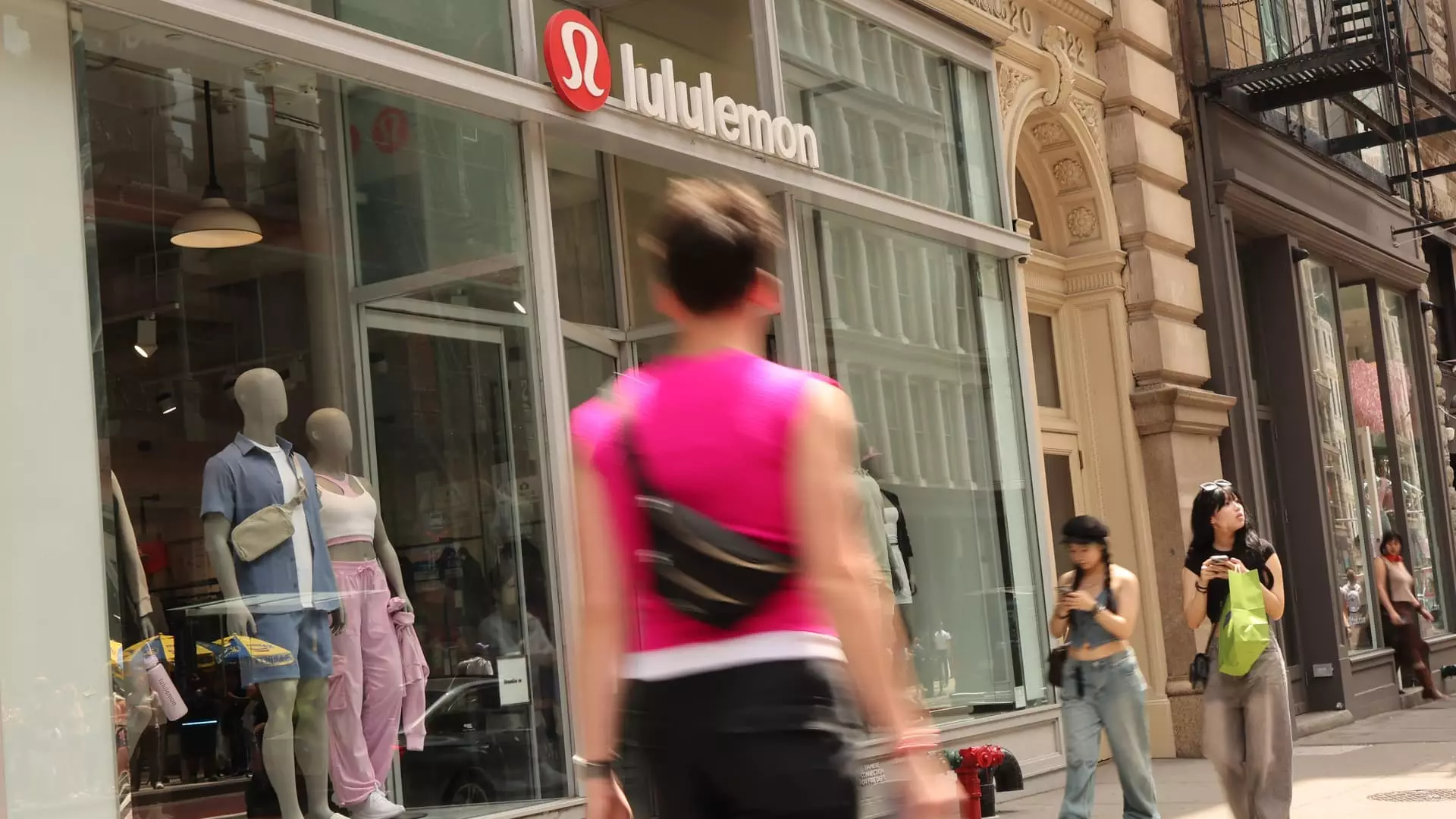Lululemon Athletica’s latest earnings report is a testament to the tumultuous climate that retailers are currently navigating. On the surface, the company managed to outpace Wall Street’s insights for fiscal Q1 this past Thursday, raising eyebrows with an earnings per share (EPS) of $2.60, exceeding expectations of $2.58. Simultaneously, revenue rose to $2.37 billion compared to the anticipated $2.36 billion. However, this glittering facade quickly crumbles under scrutiny as Lululemon’s decision to slash full-year profit guidance sends tremors through the market. Originally forecasting EPS in the range of $14.95 to $15.15, the athletic wear giant has now recalibrated expectations to just $14.58 to $14.78—a stark revelation of vulnerability amidst an unpredictable economic landscape.
Economic Turmoil and Consumer Confidence
Lululemon’s Chief Executive Officer Calvin McDonald described their strategic philosophy of “playing offense” against the backdrop of a “dynamic macroenvironment.” However, this phrase resonates like an empty slogan amid stakeholders increasingly anxious about a decelerating U.S. economy. The reality is that almost every retailer—especially those hinging on discretionary spending—can feel the squeeze. Reported decreases in comparable sales, just a 1% rise instead of the anticipated 3%, reveal a noticeable dip in consumer confidence. The taste for luxury athleisure may be waning, as households tighten their purse strings, strategizing for uncertain times ahead.
Meanwhile, escalating tariff prices mandated by the former Trump administration cast a long shadow on profit margins, and competitors like Abercrombie & Fitch and Macy’s are already trimming their profit forecasts in response to this economic gravity. Lululemon’s primary competitors face tremendous challenges as well, like Gap, which estimates a staggering $100 million to $150 million hit due to tariffs. The minefield of inflation and supply chain complications is proving overwhelming for many companies, and Lululemon’s cut to earnings guidance stands as a stark reminder that even market leaders are not immune.
Dependence on Foreign Manufacturing
Another unsettling aspect of Lululemon’s earnings call is the company’s reliance on overseas manufacturing. Reports indicate that an eye-popping 40% of their products are produced in Vietnam alone, with significant portions also sourced from Cambodia, Sri Lanka, and Indonesia. This model raises serious flags, not only regarding potential tariff increases but also geopolitical concerns that can disrupt production entirely. Are we putting too much faith in systems that can buckle under the slightest external pressure? Relying on far-flung suppliers, especially when many do not have any direct oversight or ownership of production facilities, lays a precarious foundation for future growth. With events in international politics fluctuating rapidly, Lululemon appears to risk a significant supply chain disruption that could jeopardize its broader strategy.
Stock Market Reactions and Investor Sentiment
Despite outperforming earnings forecasts, Lululemon’s stock plummeted by around 20% in after-hours trading—a chilling reflection of growing investor skepticism. Shares have already dwindled approximately 13% year-to-date prior to this earnings call, and such downward spirals generally signal trepidation among investors. When stock prices don’t align with earnings results, it often underscores broader concerns about sustainability and strategy. Investors are likely losing faith in Lululemon’s leadership and its purported competitive advantages in the face of systemic pressures that have begun to outweigh its prior glories.
Global Economic Factors at Play
It’s crucial to recognize that the turmoil Lululemon is experiencing isn’t confined to its performance metrics alone; it’s symptomatic of a wider malaise affecting retailers across the globe. Rising interest rates have infused an air of caution among consumers already reeling from inflationary pressures. When consumers hesitate to spend, brands that once flourished from premium pricing may find themselves scrambling. The climb of Lululemon could be hindered by external imbalances that are simply out of their control, which begs the question: Are revenue projections optimistic or merely a best-case scenario in a chaotic setting?
Rethinking Growth Aspirations
The optimistic rhetoric surrounding Lululemon’s potential for growth is beginning to ring hollow. While company leaders speak of leveraging a “strong financial position,” the reality is, even once-untouchable brands must recalibrate their aspirations when the winds of economic uncertainty howl. With potential spikes in production costs and shifting consumer sentiment, Lululemon’s pathway forward seems fraught with challenges that could radically redefine its place in the market landscape. Companies assuring growth in a climate of adversity inevitably face judgment from investors and consumers alike.
The athletic wear market is vast, but a myriad of external forces compels us to consider cautiously whether Lululemon is prepared to sustain its position. Will it remain a leader, or is it merely the latest victim of an unforgiving economic tide? The way forward will be anything but straightforward.

